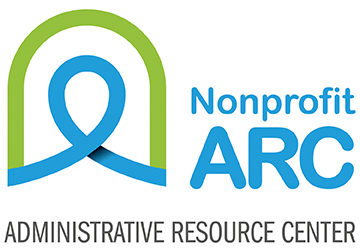OF COURSE I KNOW EXACTLY WHERE EVERYTHING IS!
The ringing in of the New Year in the US is accompanied by dramatic increases in testosterone resulting from the seasonal onset of Football Fever. College teams vie in Bowl games (44 Bowl games will take place in 2016), many with curious sponsorship-induced names (the Taxslayer Bowl?). Pro teams are in the thick of the playoff contention race, and the Super Bowl is roughly a month away. One of the situations you’re bound to encounter listening to the play-by-play is an announcer talking about a team “moving the pile.” Basically, this means that the team with the ball calls a running play, and despite the defense’s best efforts the offense physically overpowers them and literally moves the pile of humanity forward. For football purists, it represents the essence of the game – toughness and the exertion of one team’s will over that of their opponent. The pile represents the struggle to win in its most intense and fundamental sense.
In the office environment, the pile represents a struggle too – a battle waged by every decision maker and manager in every industry, consciously or sub-consciously, on a routine basis. The pile might be papers on a desk, files in a folder, or to-do’s on a virtual calendar but in each case it represents a series of demands and/or tasks all requiring attention. These competing demands are what makes “The pile” a compelling metaphor for the tradeoff between doing what is urgent and doing what is important.
If we envision all the issues requiring our attention, our pile (or piles!) is stacked with the most urgent things right on top. As our day proceeds, we remove some urgent things off the top. However, we also take on additional tasks not previously known and add them to the pile. And where do the urgent items go? Right on top, of course. It quickly becomes apparent that the odds (aka our pile) are stacked against getting to the issues that are important – until they become urgent, of course. Developing effective strategies for “moving the pile,” productively and proactively, is one of the best investments leaders and organizations can make.
A common structure for visualizing the urgent/important dichotomy is formally known as the Eisenhower Principle, illustrated as a matrix.
By assigning a definition and corresponding approach to each quadrant, Eisenhower’s matrix allows us to “move the pile” thoughtfully. It heightens our awareness to the pile’s influence on our activities. It also helps identify specific strategies that allow us to best contend with all the information we’re confronted with.
Look at the top left quadrant – Urgent, Not Important. Labeled “Distraction,” the attendant recommended action is to delegate. Spend another minute thinking about what represents the greatest source of distraction in your day. Did the word “email” come to mind? How do we “delegate” email? Oh, if only we could!! We can, however, set up folders, rules and approaches for minimizing the degree to which we are distracted. Randall Dean, a time management expert, has some incredible tools and strategies for dealing with email overload.
The lower right quadrant is the holy grail of “pile moving.” This is the layer of the pile that is prone to stagnation, and simultaneously holds the most promise for ultimately reducing the size of the pile over time. It is where strategic thinking, reflection, system optimization, organization development and employee engagement reside. This should make sense when considering that it is the least task-focused and most behavior-based of the quadrants. It is quite literally the equivalent of buried treasure – buried beneath an ever circulating and seemingly self-perpetuating mound of tasks, tasks, tasks.
The urgent will always win unless… WE take the initiative to MOVE THE PILE.
Consider this approach:
1. Set aside (aka actually schedule in on your calendar) a minimum of one solid hour of undistracted, uninterrupted time. This may require explicit communication with your team, and discipline on your part to resist the temptation to BE distracted.
2. Consolidate all of your To-Do’s – your sticky notes, scratch paper, e-notes, calendar appointments, professional goals and strategic priorities – into one comprehensive list. This step may be the driver for how much time you actually need to block.
3. Without being overly specific, categorize each item into one of the four quadrants. If this initially seems overwhelming, just concentrate on identifying the items that fall into the “IMPORTANT. NOT URGENT.” category.
4. Prioritize each of the “I, not U” items from most to least important. Hopefully, the irony of "I, not U" isn't lost and in this case, it's okay - no, IT'S ESSENTIAL - that you put YOU before others. Otherwise, the pile will drive YOU, instead of YOU driving the pile!
5. Schedule time on your calendar specifically to work on the most important item and, again, commit to not allowing yourself to be distracted. If an unavoidable conflict arises, immediately reschedule and do so at the earliest possible time.
Look what just happened! You moved the pile. You reshuffled the deck, so now that important issue rose to the top. And it did so on your timeline, not based on some extrinsic motivator. Like any new practice, it will take some time to catch on. Essentially, it is a formula for creating a new (good!) habit, and as is true with all habits, repetition will result in the process becoming organic and routine. Wishing you a terrific year ahead, and may you enjoy progress and fulfillment in all that is IMPORTANT to you!
